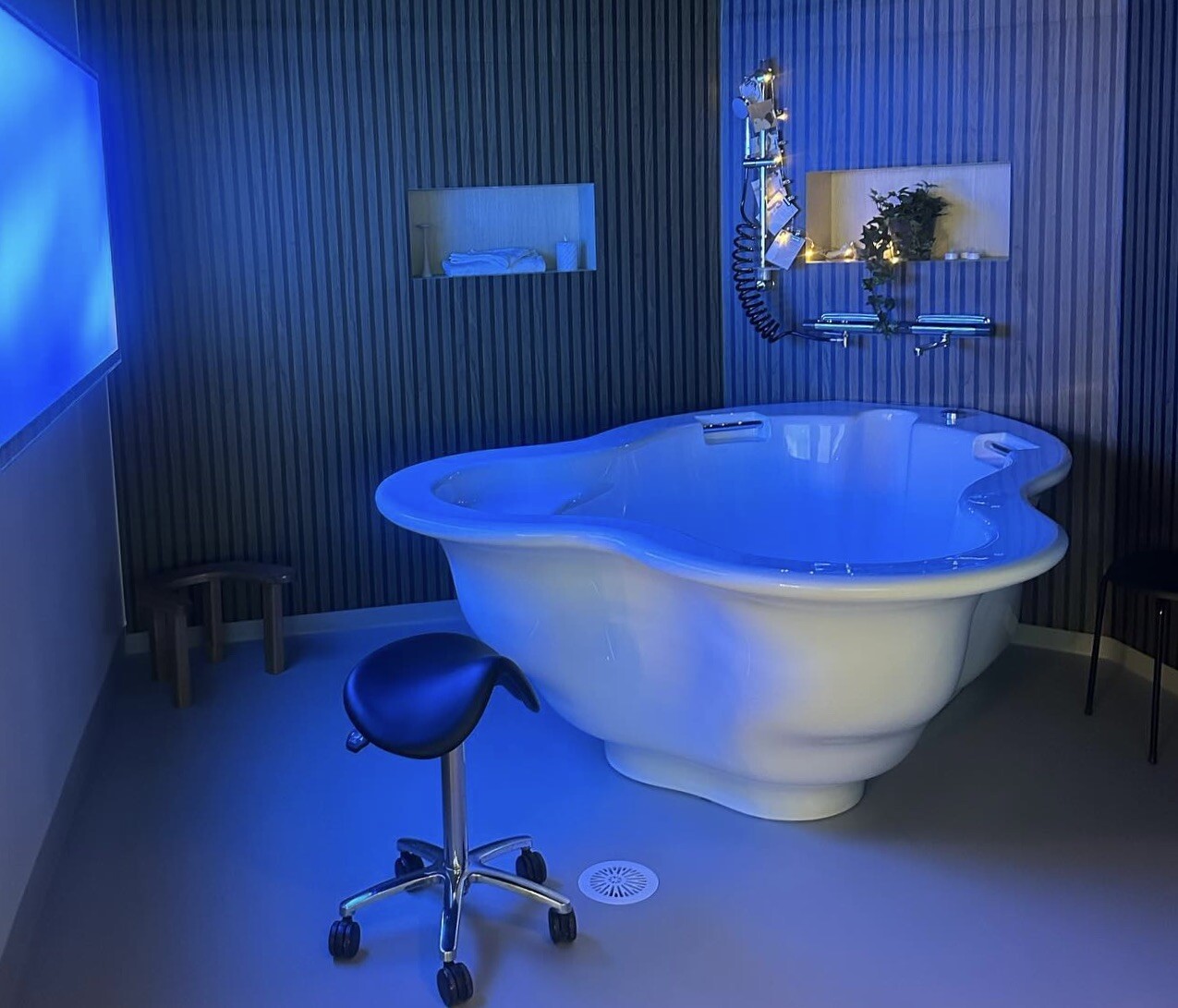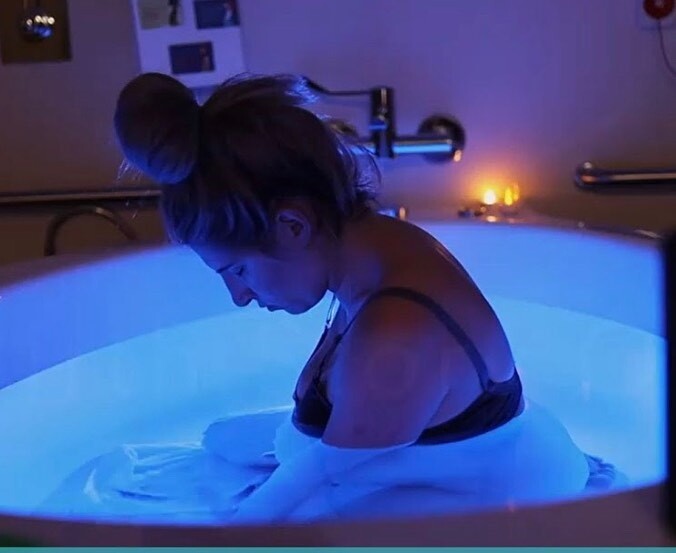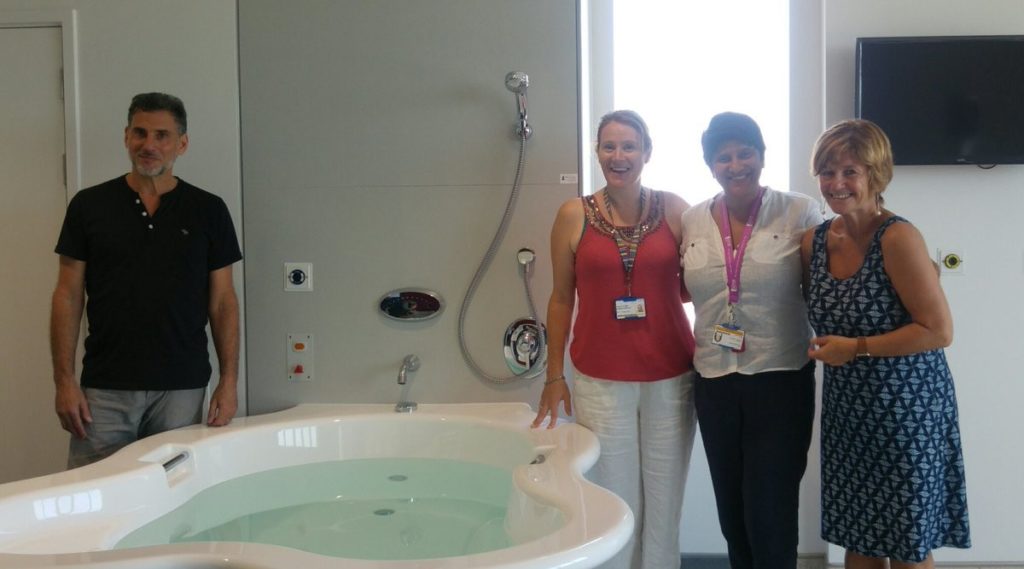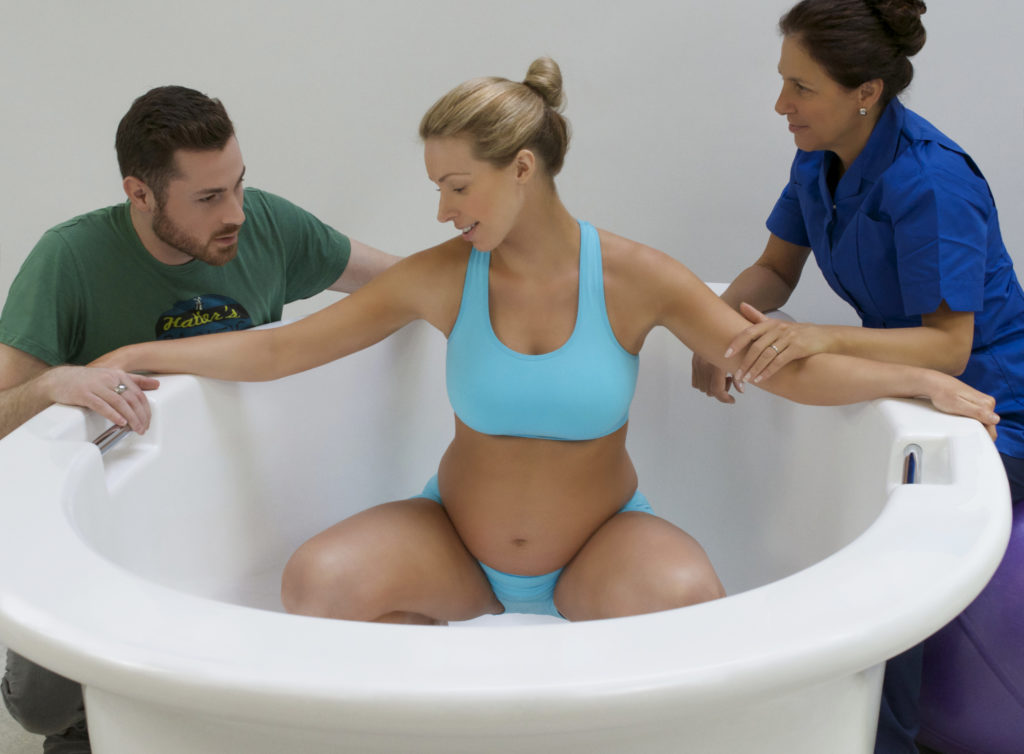In recent years, there has been a growing interest in the use of water birth pools as a means to improve the birthing environment and encourage physiological labor and natural birth.
This article explores the benefits of water birth pools and provides evidence-based insights into their positive effects on maternal well-being and the birthing process.

Water Birth Pools: Creating a Soothing Environment
Water birth pools create a calm and soothing environment for expectant mothers during labour and birth offering advantages that contribute to a more relaxed and comfortable experience.
- Pain Relief: One of the primary benefits of water birth pools is their ability to provide natural pain relief during labour. Immersing oneself in warm water has a calming effect, reducing the perception of pain and promoting relaxation. This can significantly reduce the need for medical pain management interventions such as epidurals.
-
- A study published in the Journal of Midwifery & Women’s Health (Eriksson et al., 2006) found that immersion in warm water during labor reduced the use of epidural analgesia.
- Enhanced Mobility: Water buoyancy supports the mother’s weight, allowing her to move more easily and adopt various birthing positions, including squatting and kneeling. This increased mobility can facilitate the progress of labour.
-
- Research conducted by Geissbuehler et al. (2002) and published in the European Journal of Obstetrics & Gynecology and Reproductive Biology demonstrated that birthing in water reduced the need for episiotomies and instrumental deliveries.
- Reduction of Stress and Anxiety: The warm, enveloping environment of water birth pools can reduce the levels of stress and anxiety experienced by expectant mothers. Lower stress levels contribute to a more efficient labour process and better outcomes.
-
- A study in the Journal of Clinical Nursing (Burns et al., 2012) showed that women who used water immersion during labour reported lower levels of stress and anxiety compared to those who did not.
- Promotion of Natural Birth: By offering a relaxed atmosphere and pain relief, water birth pools are conducive to natural childbirth. The reduced use of medical interventions and interventions such as epidurals or oxytocin augmentation supports a more physiological birth process.
-
- A systematic review and meta-analysis by Cluett et al. (2004) in the Cochrane Database of Systematic Reviews found that water immersion in labor was associated with a reduced need for epidurals and shorter labors.
- Improved Satisfaction: Mothers who give birth in water often report high levels of satisfaction with their birthing experience. This satisfaction can be attributed to the positive environment, reduced pain, and increased control over the birthing process.
-
- A study published in the British Journal of Obstetrics and Gynaecology (Zanetti-Dällenbach et al., 2007) indicated that women who used water immersion during labor expressed greater satisfaction with their birthing experience compared to those who did not.

Conclusion
Water birth pools have proven to be a valuable addition to the birthing environment, encouraging physiological labour and natural birth. Their warm and soothing properties provide pain relief, enhance mobility, reduce stress and anxiety, and promote a more natural birthing experience.
As supported by various research studies, the use of water birth pools can lead to increased maternal satisfaction and a reduction in the need for medical interventions. It is important for healthcare providers and expectant mothers to consider the benefits of water birth pools when planning for childbirth, as they have the potential to improve the overall birthing experience and outcomes.
References:
- Eriksson, M., Ladfors, L., Mattsson, L.-Å., & Fall, O. (2006). “A waterbirth: another way of giving birth.” Journal of Midwifery & Women’s Health, 51(6), 476-482.
- Geissbuehler, V., Stein, S., Eberhard, J., & Luthy, C. (2002). “Waterbirths compared with landbirths: an observational study of nine years.” European Journal of Obstetrics & Gynecology and Reproductive Biology, 99(1), 14-19.
- Burns, E., Blamey, C., & Ersser, S. J. (2012). “An investigation into the use of aromatherapy in intrapartum midwifery practice.” Journal of Clinical Nursing, 21(5-6), 617-625.
- Cluett, E. R., Nikodem, V. C., McCandlish, R. E., Burns, E. E., & (2004). “Immersion in water in pregnancy, labour and birth.” Cochrane Database of Systematic Reviews, (2), CD000111.
- Zanetti-Dällenbach, R., Lapaire, O., Maertens, A., Holzgreve, W., & Hösli, I. (2007). “Waterbirths: A Comparative Study. A Prospective Study on More than 2,000 Waterbirths.” British Journal of Obstetrics and Gynaecology, 114(9), 1110-1118.









